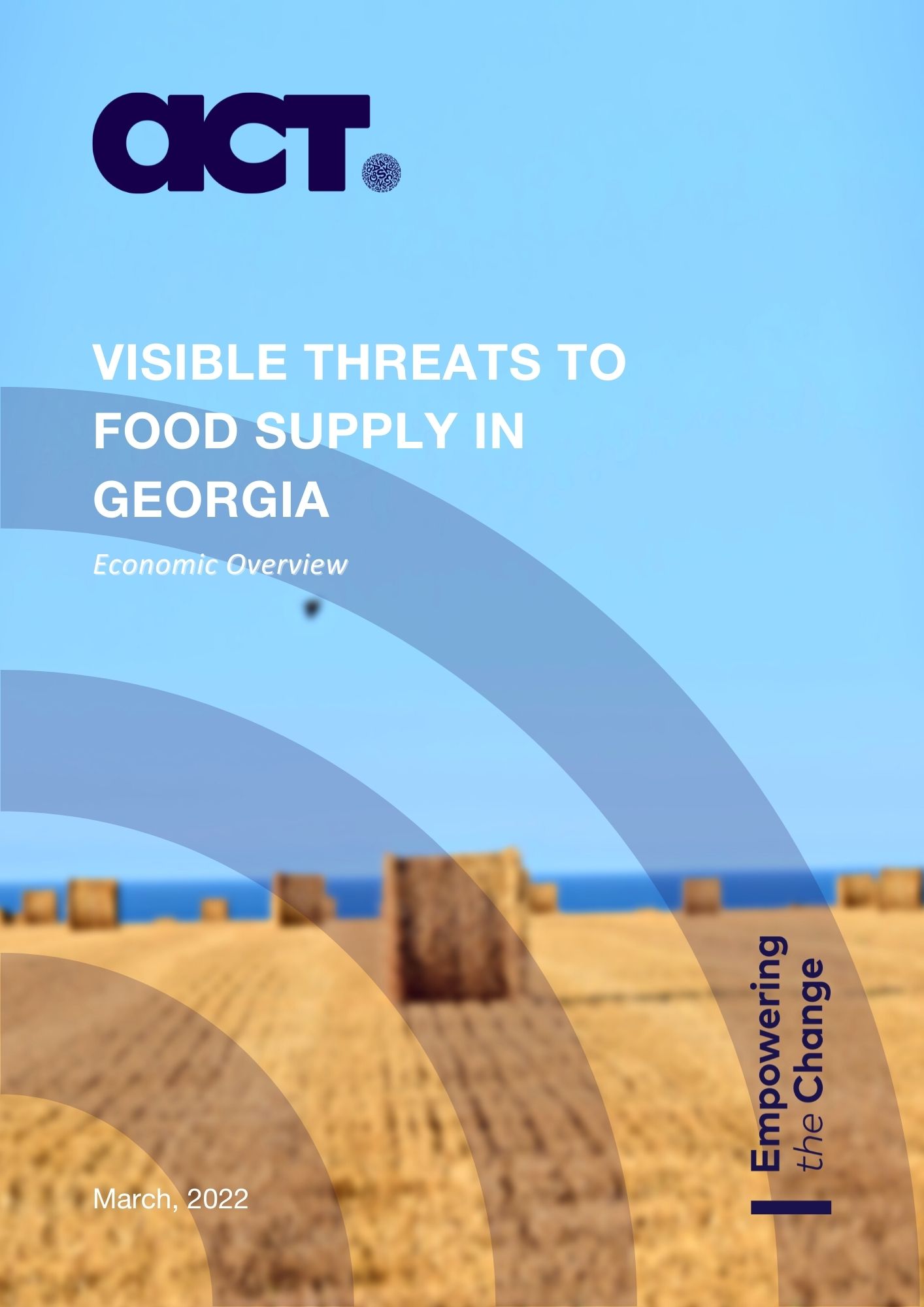In the light of the ongoing Russia-Ukraine war, due to the geopolitical and economic challenges, it is becoming critical to assess the probability of provision of Georgian population with a sufficient food supply. It is important to use the existing agri-food supply potential, maximizing its effective use while accurately planning for the country’s food supply chains.
It is known that the National Statistics Office of Georgia determined the following basic food products to be of strategic importance and essential for the human organism: wheat, corn, potatoes, vegetables, grapes, meat (including beef, pork, lamb, goat, poultry), milk, dairy products, and eggs. Analysis of existing data on the mentioned highly nutritious products, the current situation, and predictions enable us to answer the questions on whether the country has the potential to deal with the existing challenges and whether it should take steps to put a crisis plan in action.
The Self-sufficiency Ratio 2020
|
According to the Food and Agriculture Organization (FAO), food security can be assessed by the self-sufficiency ratio, which measures whether to what extent is the country capable to meet the demand for the given product by relying on local production. Food security is influenced by the economic and natural resources of the country.
While food makes up the highest portion (30.23%) of Georgia’s consumer basket (Geostat; Consumer basket product category weights 2022), it is of most interest to know whether the local economy can meet the supply-demand of the population on food containing the essential nutrients? How much does the country rely on imports, and for which products?
The self-sufficiency ratio is calculated by the following formula: Local production divided by, local production plus import, minus export, multiplied by 100. In the case of a positive trade balance (if the export value exceeds the import value), where other variables remain constant, the local production growth has a positive effect on the self-sufficiency ratio. In a configuration as such, an increase in imports causes a decrease in the self-sufficiency ratio, making us more dependent on other countries. As for the exports, the self-sufficiency ratio rises in line with the increase in export volumes. |
 |
As of data from 2020, in the list of the aforementioned highly nutritious products, grapes have the highest self-sufficiency ratio of 145%, as well as the highest export rate, which seems quite reasonable, as, in case of surplus production, the product can be exported abroad. Wheat takes the last position at the bottom of the list, with a self-sufficiency ratio of not more than 15%, compliant with the same 2020 data. While placing these data in a logical chain consisting of the following: (i) the raw material values and the frequency of their use; (ii) the negative expectations born by the war; (iii) the sanctions imposed on Russia being our main importer at this stage; and (iv) the new economic environment built in our country. Based on the aforementioned, it can be assumed that to avoid a sharp increase in bread price, it might be necessary to look for a new trading partner to compensate for the product shortfall.
According to the Food and Agriculture Organization (FAO), food security can be assessed by the self-sufficiency ratio, which measures whether to what extent is the country capable to meet the demand for the given product by relying on local production. Food security is influenced by the economic and natural resources of the country.
While food makes up the highest portion (30.23%) of Georgia’s consumer basket (Geostat; Consumer basket product category weights 2022), it is of most interest to know whether the local economy can meet the supply-demand of the population on food containing the essential nutrients? How much does the country rely on imports, and for which products?
The self-sufficiency ratio is calculated by the following formula: Local production divided by, local production plus import, minus export, multiplied by 100.
In the case of a positive trade balance (if the export value exceeds the import value), where other variables remain constant, the local production growth has a positive effect on the self-sufficiency ratio. In a configuration as such, an increase in imports causes a decrease in the self-sufficiency ratio, making us more dependent on other countries. As for the exports, the self-sufficiency ratio rises in line with the increase in export volumes.
As of data from 2020, in the list of the aforementioned highly nutritious products, grapes have the highest self-sufficiency ratio of 145%, as well as the highest export rate, which seems quite reasonable, as, in case of surplus production, the product can be exported abroad. Wheat takes the last position at the bottom of the list, with a self-sufficiency ratio of not more than 15%, compliant with the same 2020 data. While placing these data in a logical chain consisting of the following: (i) the raw material values and the frequency of their use; (ii) the negative expectations born by the war; (iii) the sanctions imposed on Russia being our main importer at this stage; and (iv) the new economic environment built in our country. Based on the aforementioned, it can be assumed that to avoid a sharp increase in bread price, it might be necessary to look for a new trading partner to compensate for the product shortfall.
Should We Re-evaluate the Major Consumer Products?
According to research conducted by ACT in 2021, the majority of Tbilisi residents consume bread and breadstuff, vegetables, fruits, dairy products, and eggs on a regular basis (every day / multiple times a week). The consumer basket consisting of these products matches with most of the highly nutritious products on the list. The most significant factor here is the frequency of consumption of bread and breadstuff. Most individuals consume bread daily. Taking into account wheat’s low self-sufficiency ratio and the current scenario which makes the prospects related to wheat even more unpredictable, it is quite possible that individuals will either have to change their consumption patterns or pay a higher price for this essential consumer product.
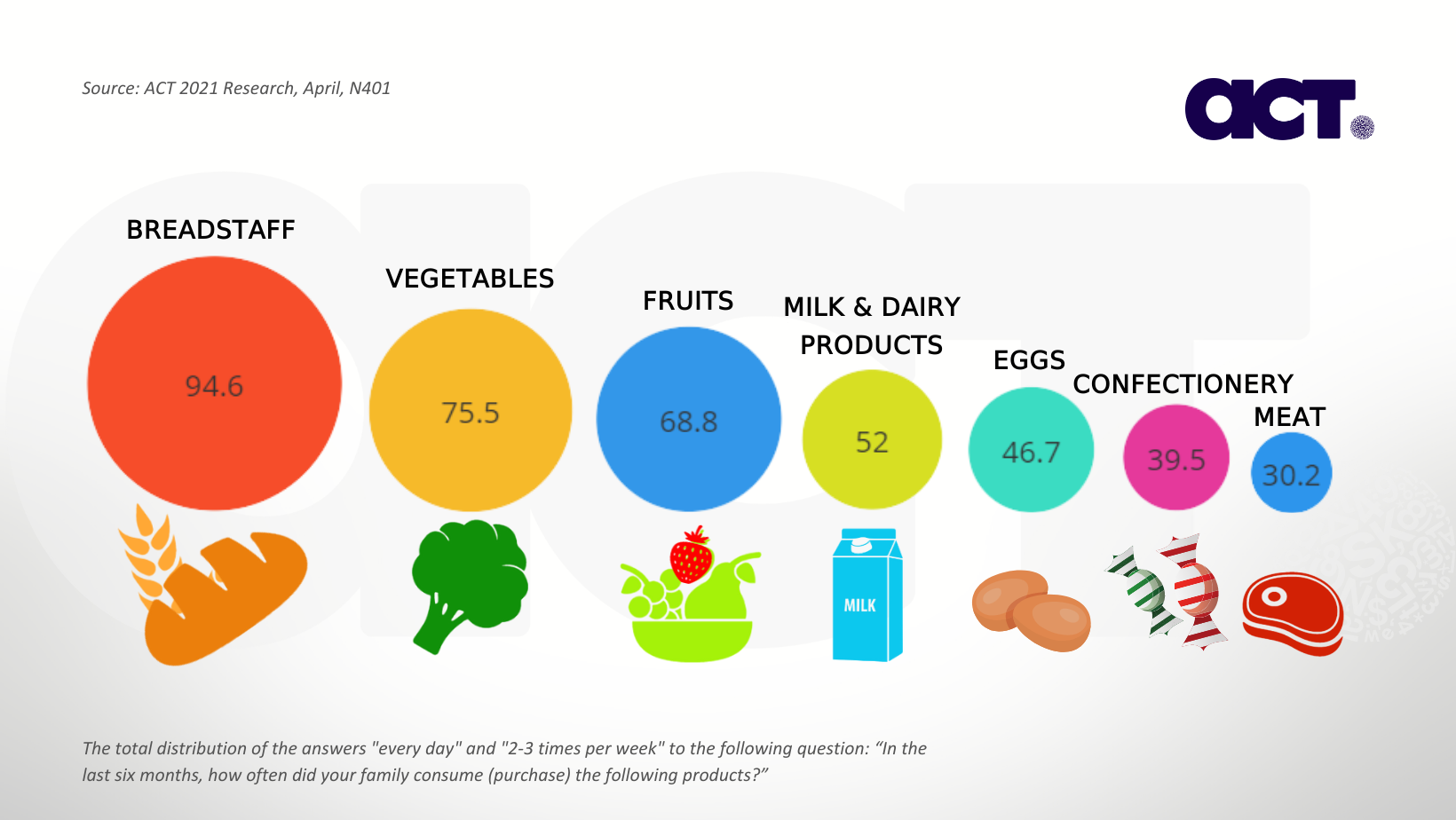
The same applies to vegetables, which are the runner-ups in terms of frequency of consumption in the consumer basket. The self-sufficiency ratio does not get our hopes up either: according to 2020 data, the ratio is 63%, with imported goods making up one-third of all stocks.
Georgia's Two Largest Trading Partners Are at War
The war between Russia and Ukraine brought to the table the importance of the role of the two warrior countries as our top food suppliers. As seen in the preceding data, Russia and Ukraine are often among the top importers and exporters of highly nutritious food products and appear as operating trade partners for Georgia. With economic activity plummeting since the beginning of the COVID-19 Pandemic in 2020, businesses and individuals have experienced steep economic plunges. Predictably, Georgia dealt with a few export countries. By 2021, businesses became capable of gradually adapting to the pandemic, responding to challenges, and increasing their economic activities as evidenced by the real GDP growth of 10.4% in 2021 (Geostat).
Russia still continues to be Georgia's primary wheat and corn supplier. In 2021, 94% of our wheat and 79% of our corn supply came from Russia.
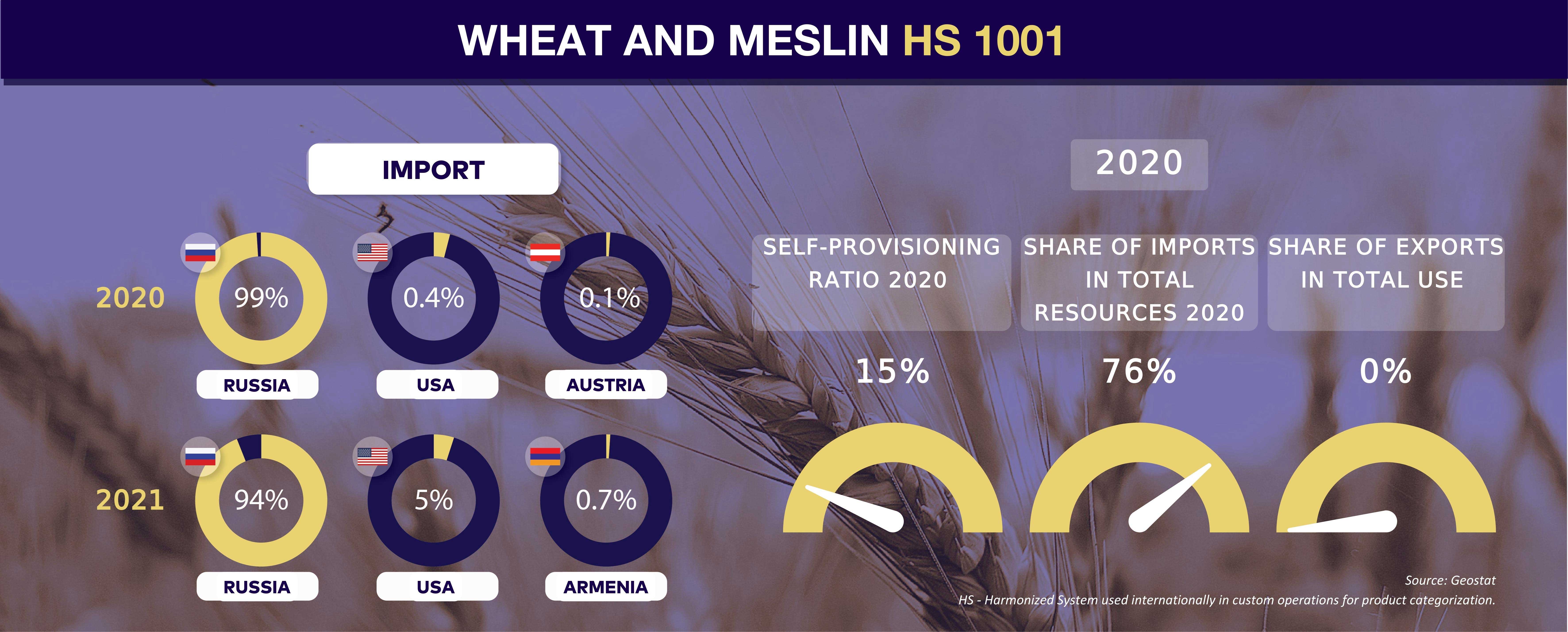

Ukraine supplies Georgia mainly with dairy products (milk powder). Imports of these products from Ukraine and Belarus accounted for 37% in 2021. Ukraine is Georgia's third-largest importer of eggs and poultry and the second-largest importer of meat.
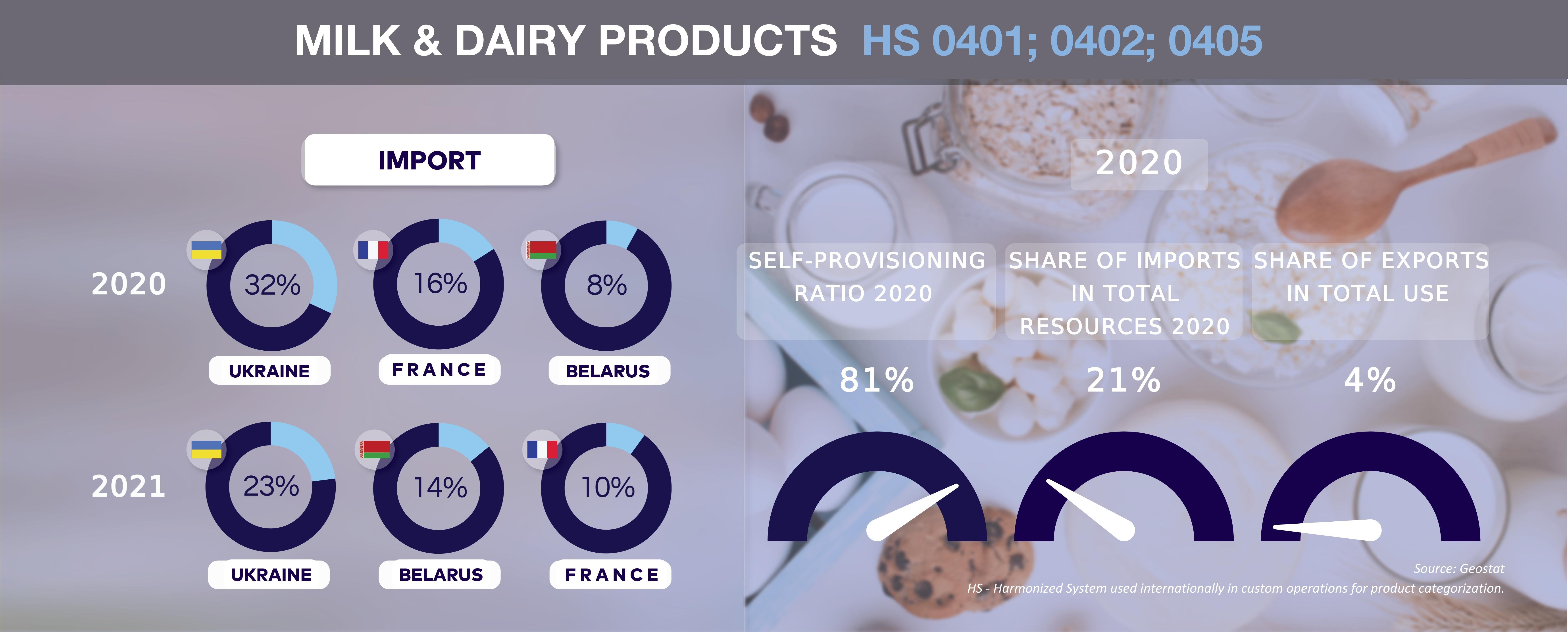
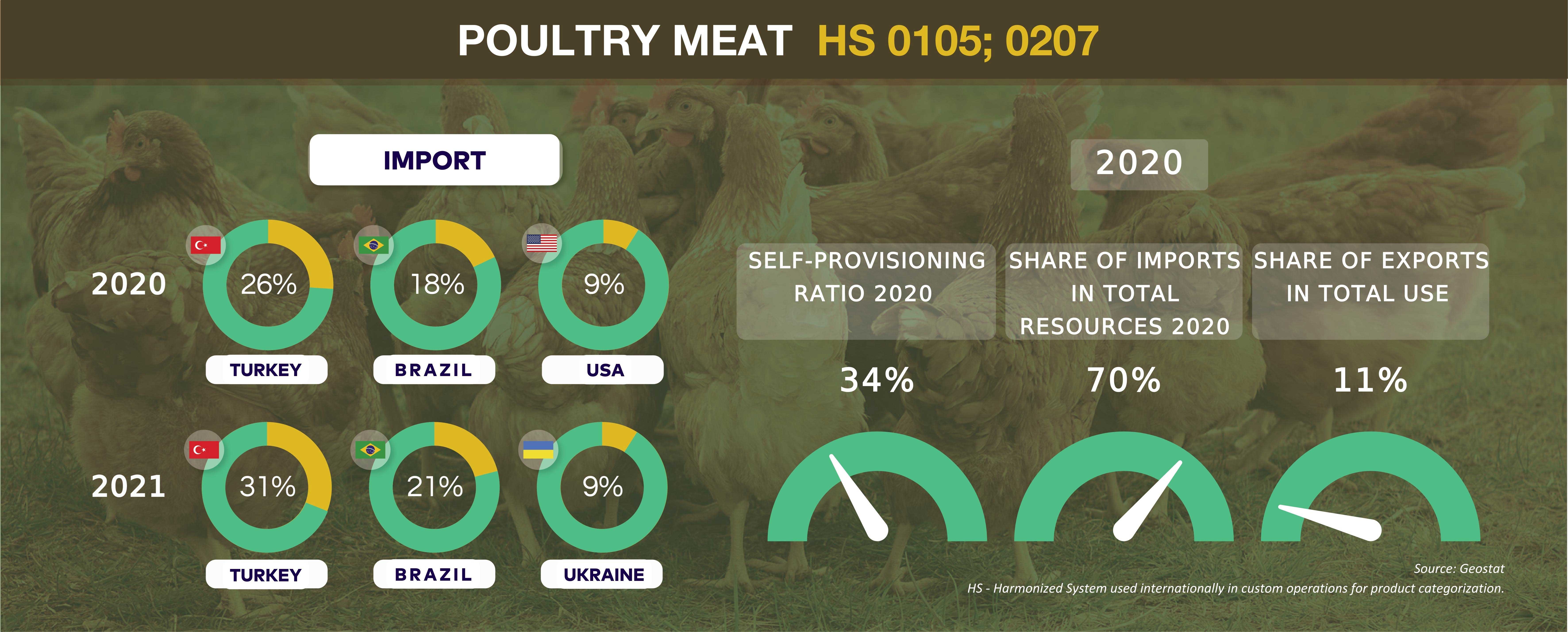
At this point, we have to consider the current state of both countries, as well as their potential as importer countries.
The major issue in Russia's case is the severe economic sanctions imposed on the country, the effects of which are already visible in Russia (disruption of the production chain, shortage of products, devaluation of national currency). Furthermore, a ban on other countries’ currency circulation in one of the trade partner countries creates a trade barrier. Here rises a question, which currency should we pay for the imported products?
Beyond the economic concerns lies the moral dilemma facing the country and pushing it to speed up the process of exploring alternative channels of import. The dilemma is obvious: the West believes that trading with Russia is what keeps the Russian army afloat, and it urges others to join the sanctions and cut off their economic ties with Russia to exclude dependency.
In the case of Ukraine, the nation being at war, it is logical that the chain of imports from the country can be interrupted, and in the long run, we could expect reduced volumes of supplied raw materials or increased prices. . In an interview with the BBC, the president of France Emmanuel Macron noted that a food crisis may be expected. According to him, "Ukraine and Russia are the two key players in food exports, but production has been hampered by the war. Because Ukrainian farmers may become disabled to sow new crops and the situation may deteriorate in 1-1.5 years." Particularly notable is the statement of Ukraine's Minister of Agriculture, Roman Leshchenko, who stated that the 2022 spring crop sowing area could be halved because of the Russian invasion.
A study by Galt & Taggart predicts that, in the worst-case scenario (considering the restrictions imposed by the US and the EU, including the cutting of Russia from the SWIFT system and the sanctions on Russian oil and gas, plus repercussions of the prolonged war situation), by 2022 in Georgia, imports may be reduced by 504 million dollars, with real GDP decrease (-1%) and inflation increase from its baseline of 4.9% to 9%.
Export Potential
Georgia's export activities face challenges of different scales, though with identical contexts. For example, grapes and grape products (including wine) are marked with high domestic production and export rates. Russia accounts for the majority of these products' total exports (up to 60%), while Ukraine and China claim significant shares (on average between 10% and 8%, respectively). It's worth noting that the share of other countries in the export of grapes and grape products, in general, is steadily increasing (from 21% in 2018 to 28% in 2021). Given current challenges, it becomes of utmost importance to look for more diversified export markets for grape products and move toward more intense trade patterns with other countries around the world.
The vegetables are also marked with a high level of export. The top exporter of vegetables (excluding potatoes), has been Russia (64%); Exports of potatoes (85%) and corn (39) have been heading to Russia as well.


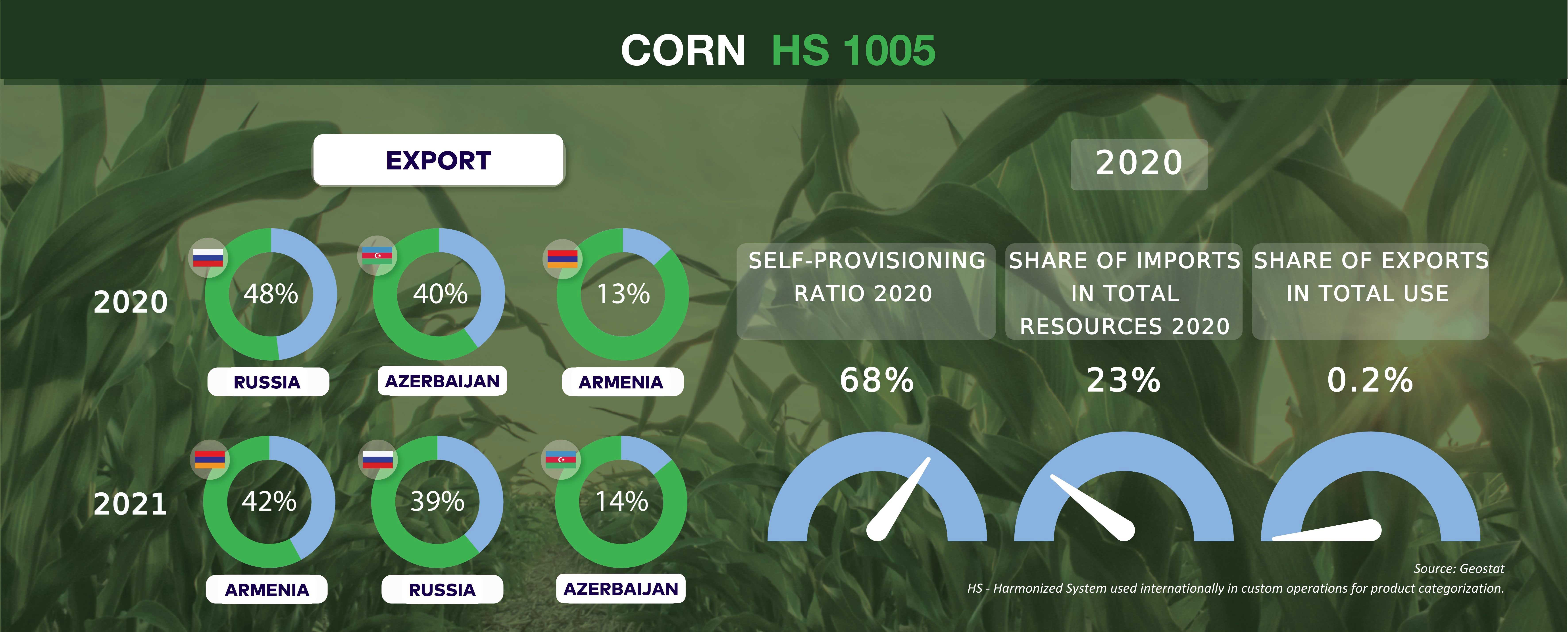
When it comes to exports, based on the same study by Galt & Taggart, it is anticipated that in the worst-case scenario discussed earlier (restrictions imposed on Russia by the US and the EU, including the cutting off Russia from the SWIFT system and the sanctions on Russian oil and gas, plus repercussions of the prolonged war situation), Georgia may face a reduction in exports by 462 million US dollars by 2022 in comparison with 2021. At the same time, the current account deficit is expected to increase from a baseline of 7.9% to 10.9%. According to Galt & Taggart, the overall external flows from Russia and Ukraine (exports, remittances, tourism, and FDI) constituted 9.6% of Georgia's GDP in 2021. According to the assessment of these flows, exports and tourism may be exposed to the largest negative impact. As for the remittances, Russia's share of remittances has dropped drastically in recent years, while Russia and Ukraine's shares in foreign direct investment (FDI) in Georgia remain at an average annual low indicator.
Anticipated Threats and the Ways of Insurance
The fact is that, even in the case where the supply of the foreign product does not shrink, the prices will still undoubtedly increase, as it will be much more expensive to build an alternative supply chain. As a result, it is critical that the essential consumer basket, stocked with highly nutritious food, is somehow maintained.
This graph displays that the Self-sufficiency ratios of the key agri-food products, such as wheat and poultry rank below 50% representing the main challenge for Georgia in ensuring sustainable food security. In a pre-pandemic or pandemic context, observations in dynamics reveal that the Self-sufficiency ratio for the majority of products keeps floating around the same benchmark.
The choice is ours – (i) we can be optimistic and assume that food security and the Self-sufficiency ratio in 2022 will remain at least unchanged and the population will not have challenges related to their daily consumer basket due to product shortages or higher prices; or, (ii) we can be realistic and start insuring against the risks retroactively.
Please download the document:
The present material is prepared by ACT's team of economists:
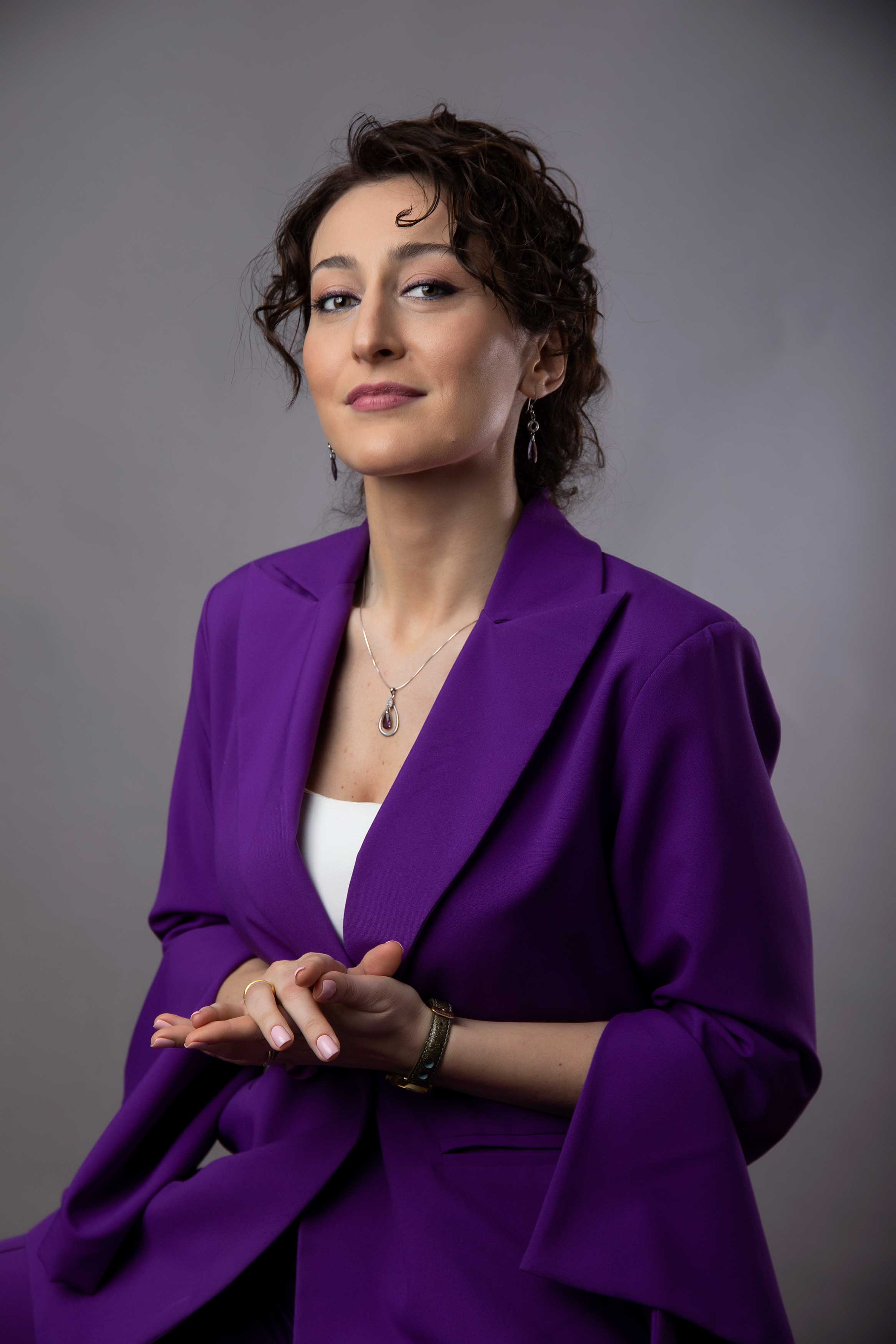 Lika Goderdzishvili |
|
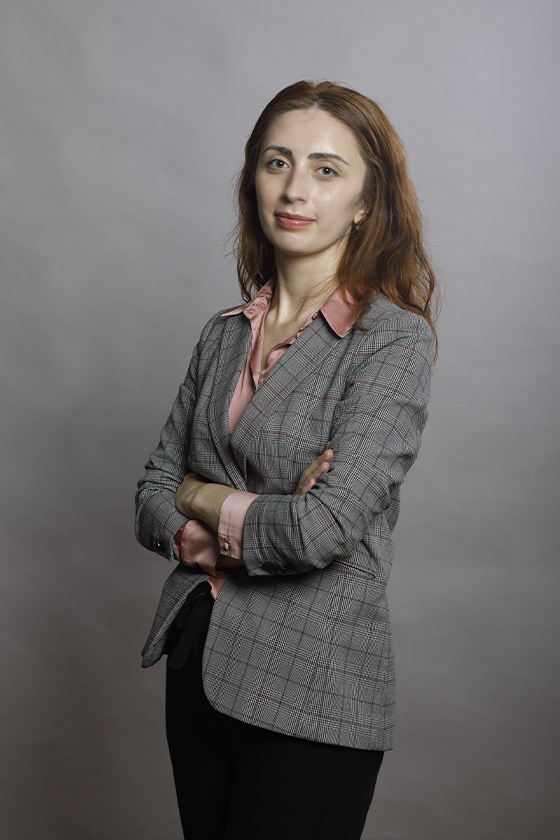 Nestan Gaprindashvili |
|
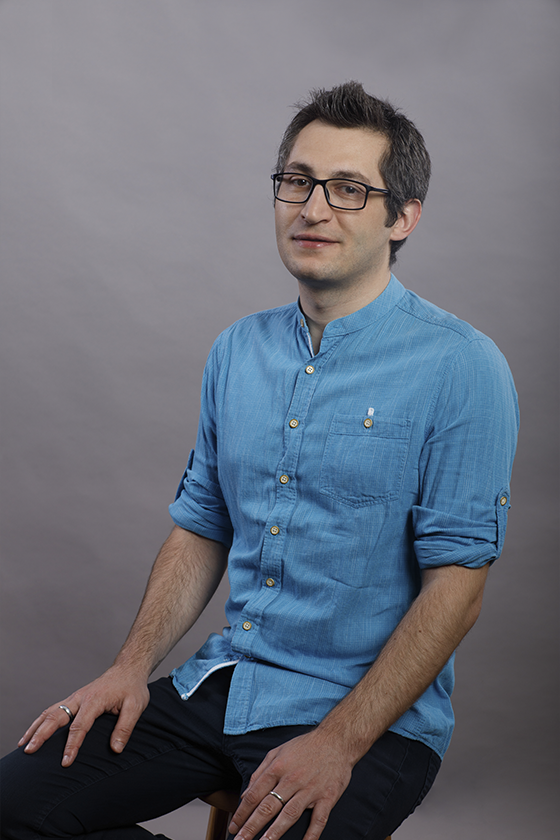 Akaki Mosakhlishvili Akaki Mosakhlishvili |
|
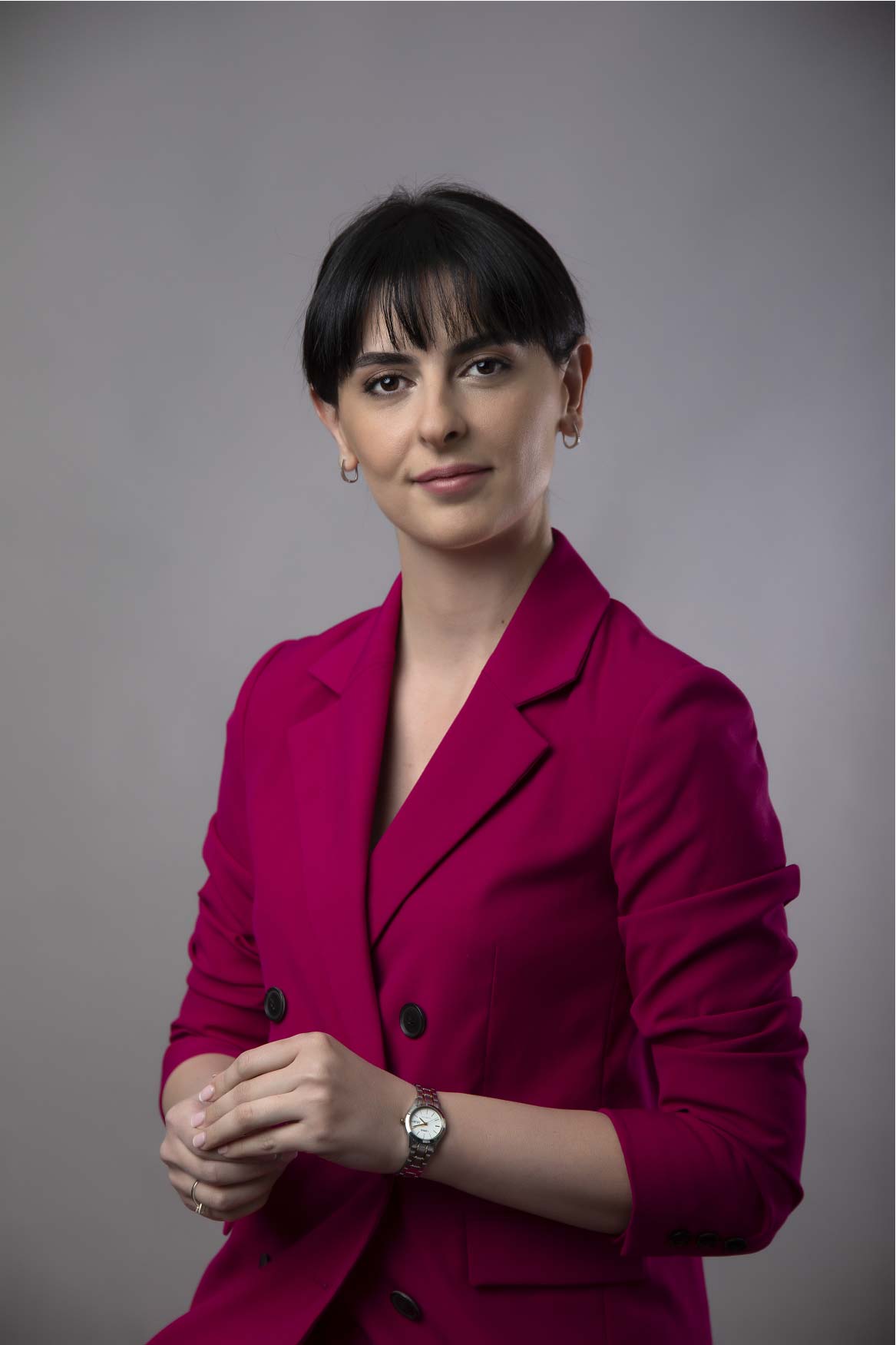 & Nino Kalandia Strategic Communications Expert |


